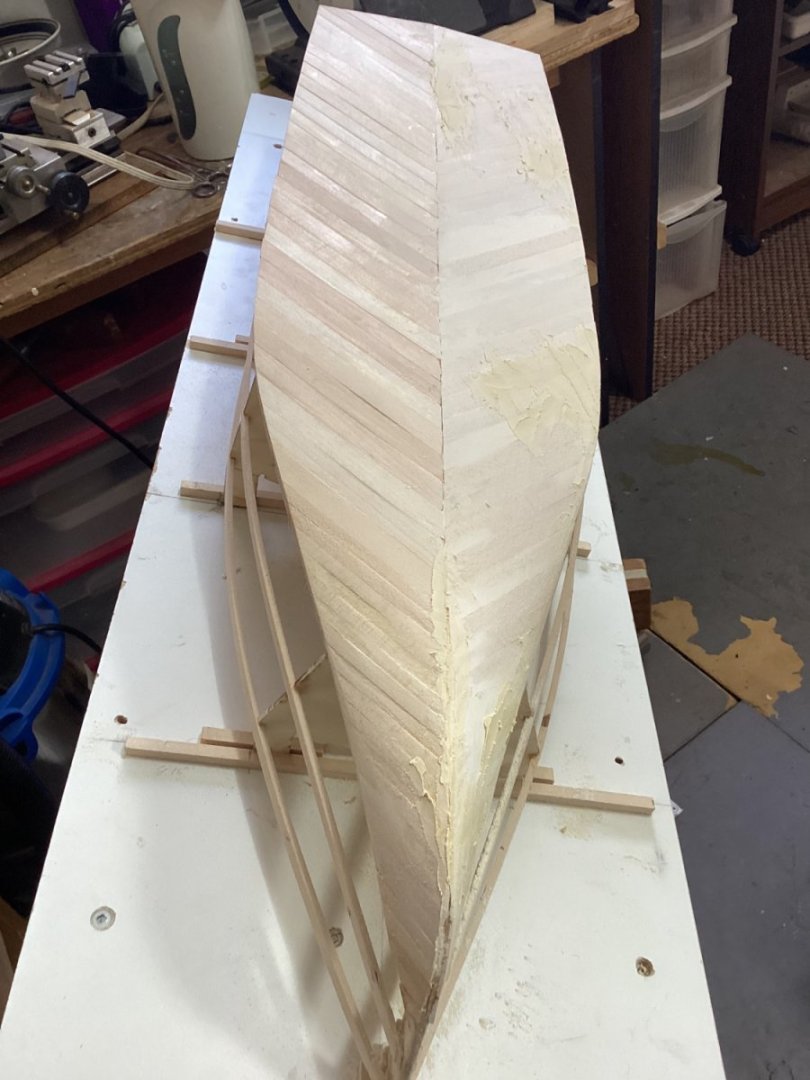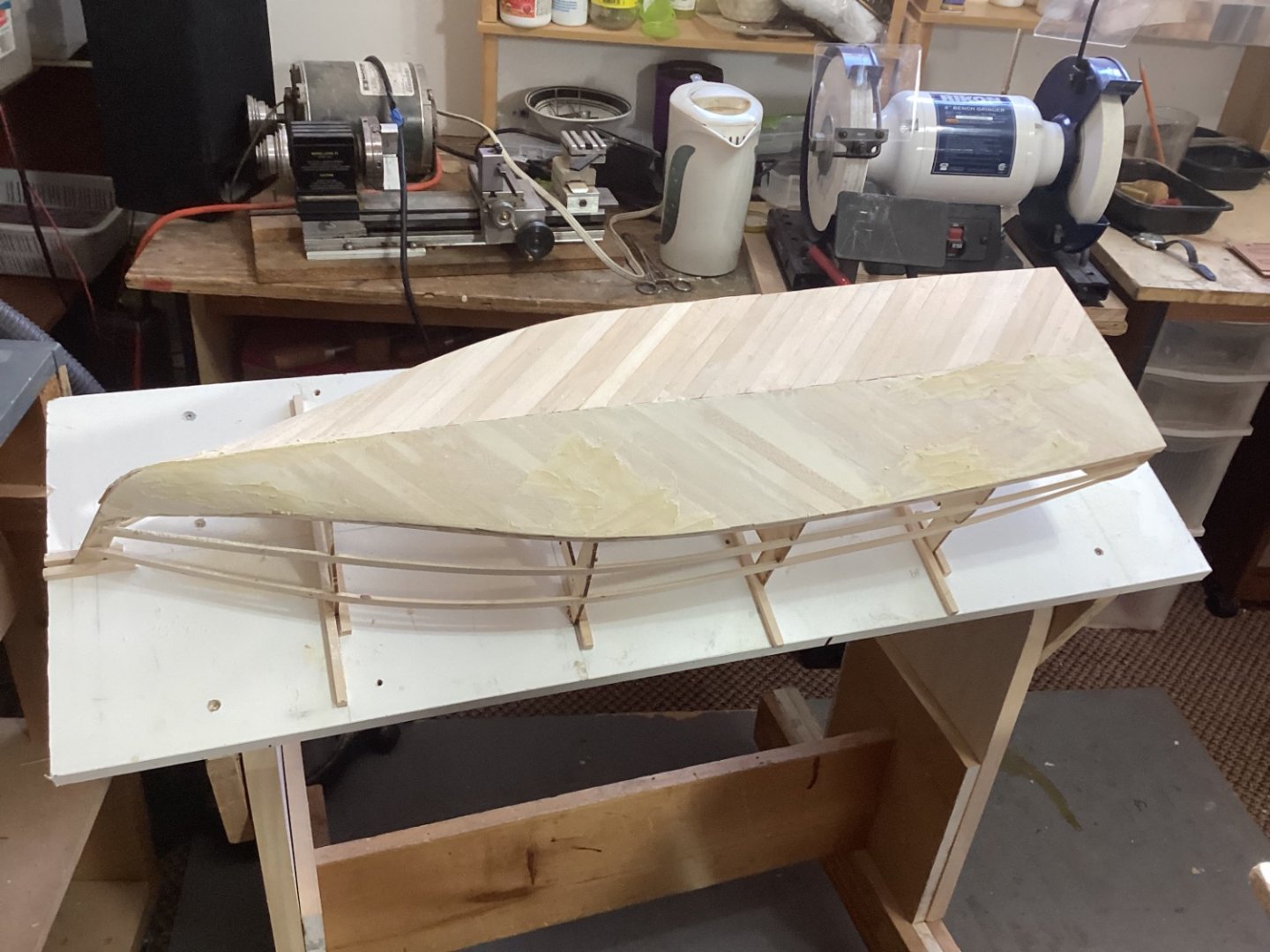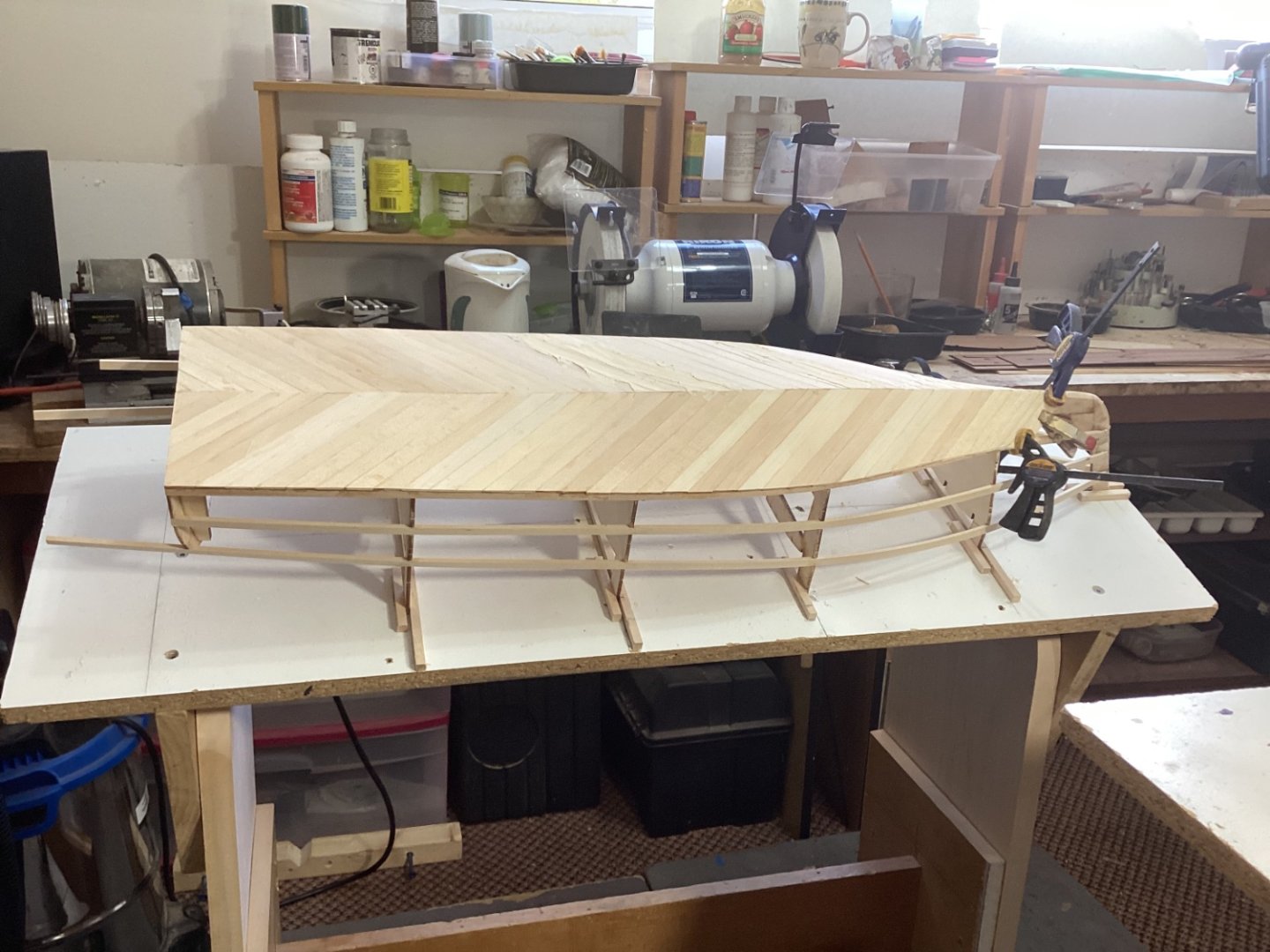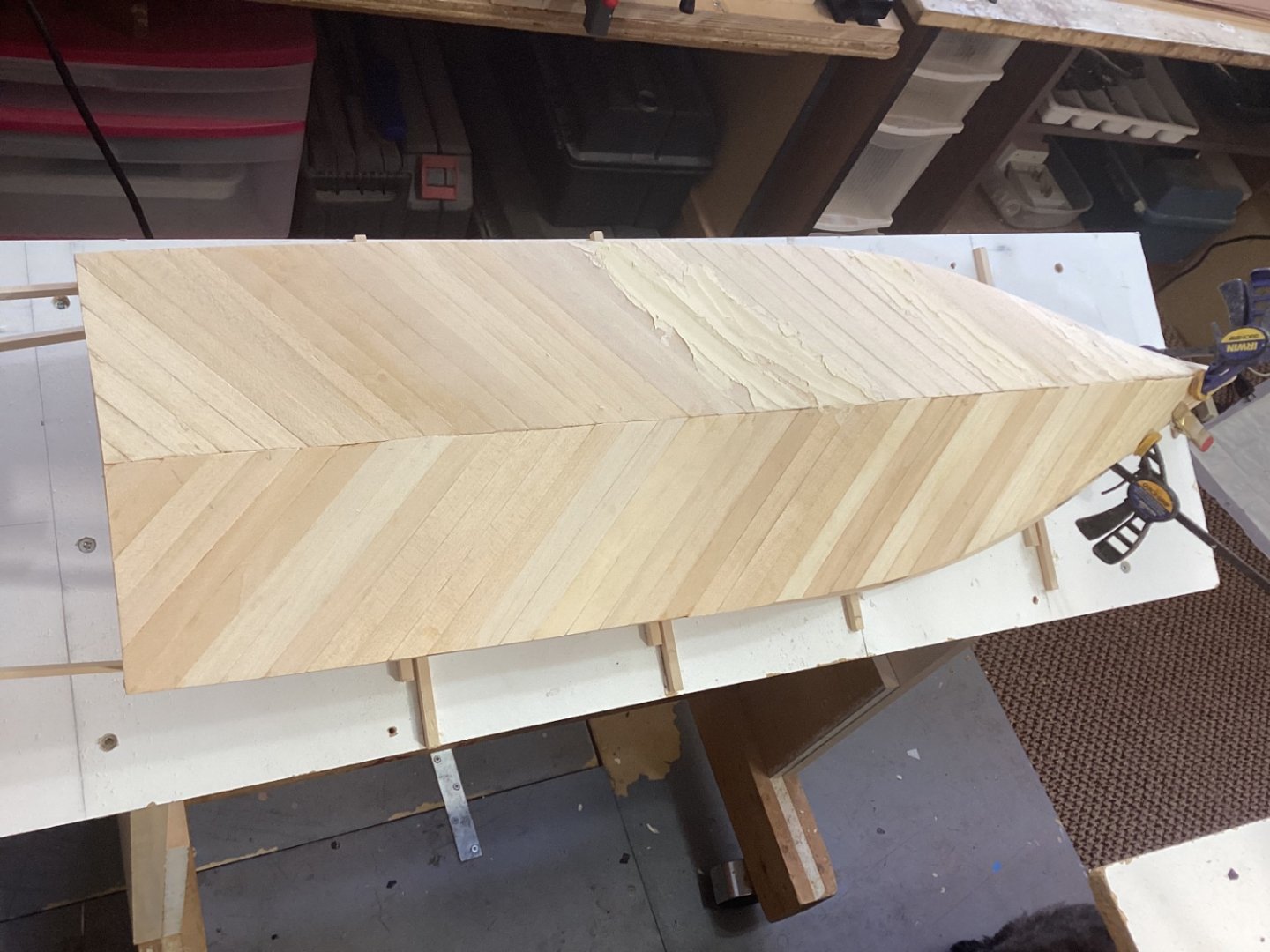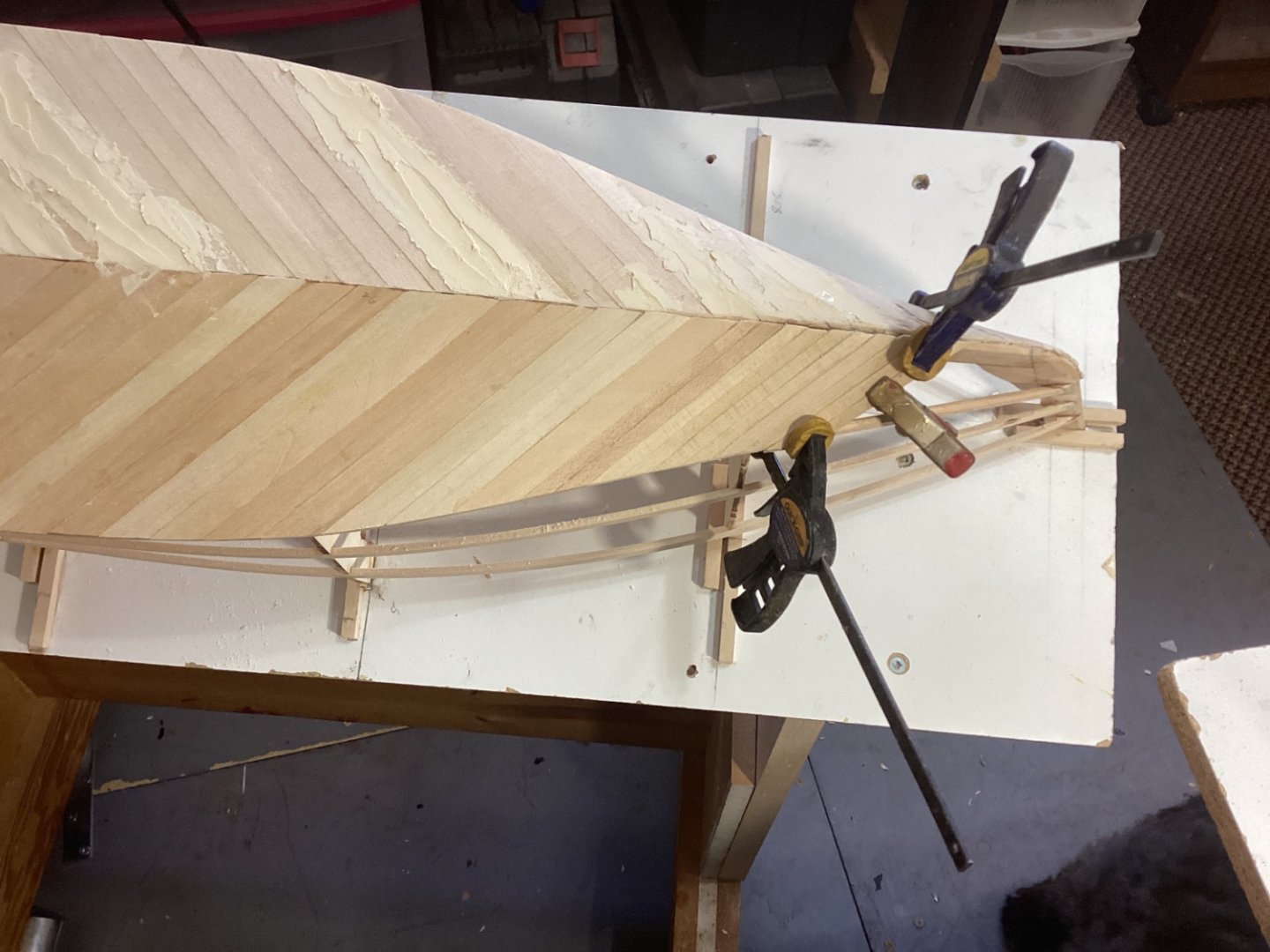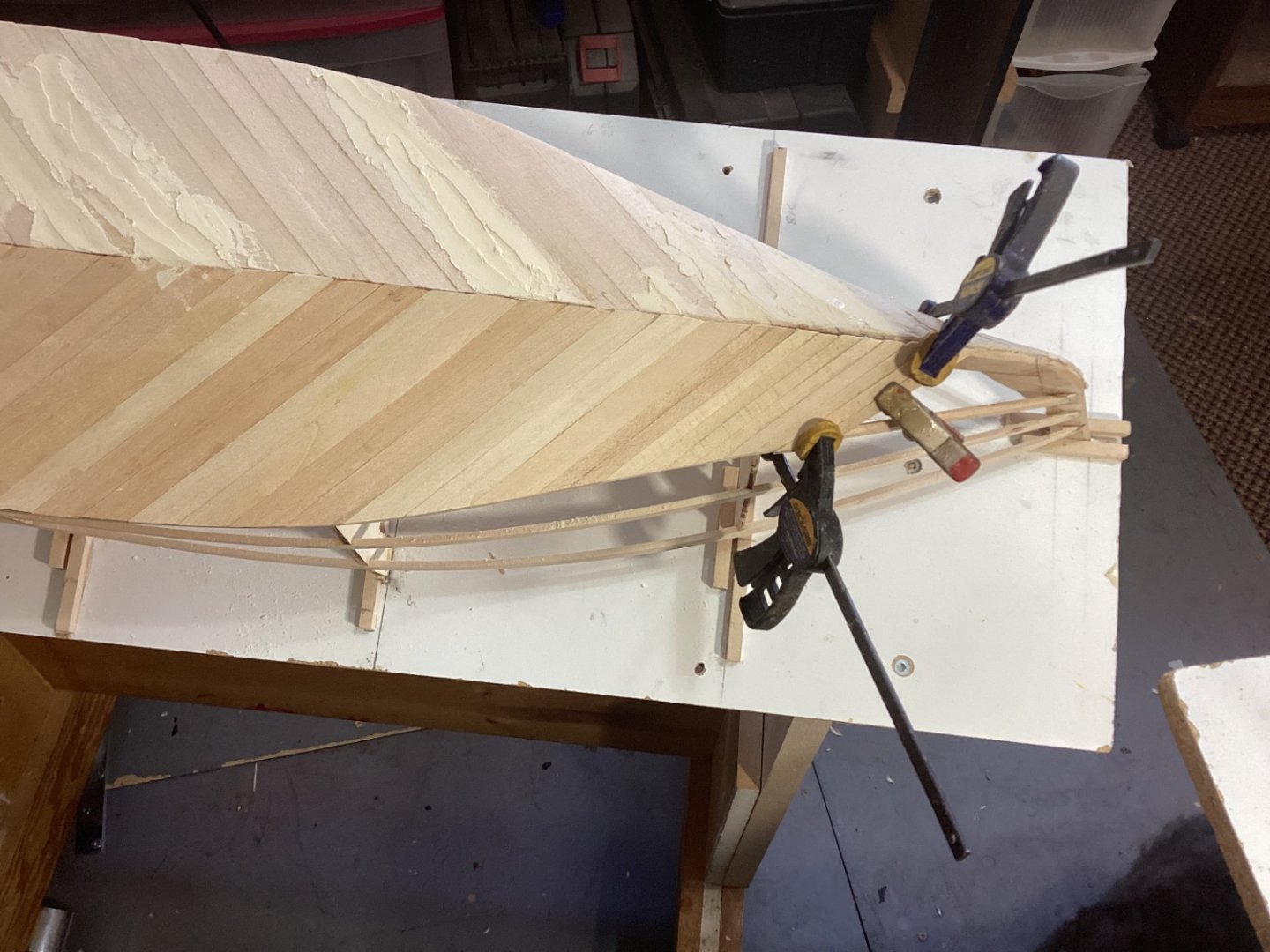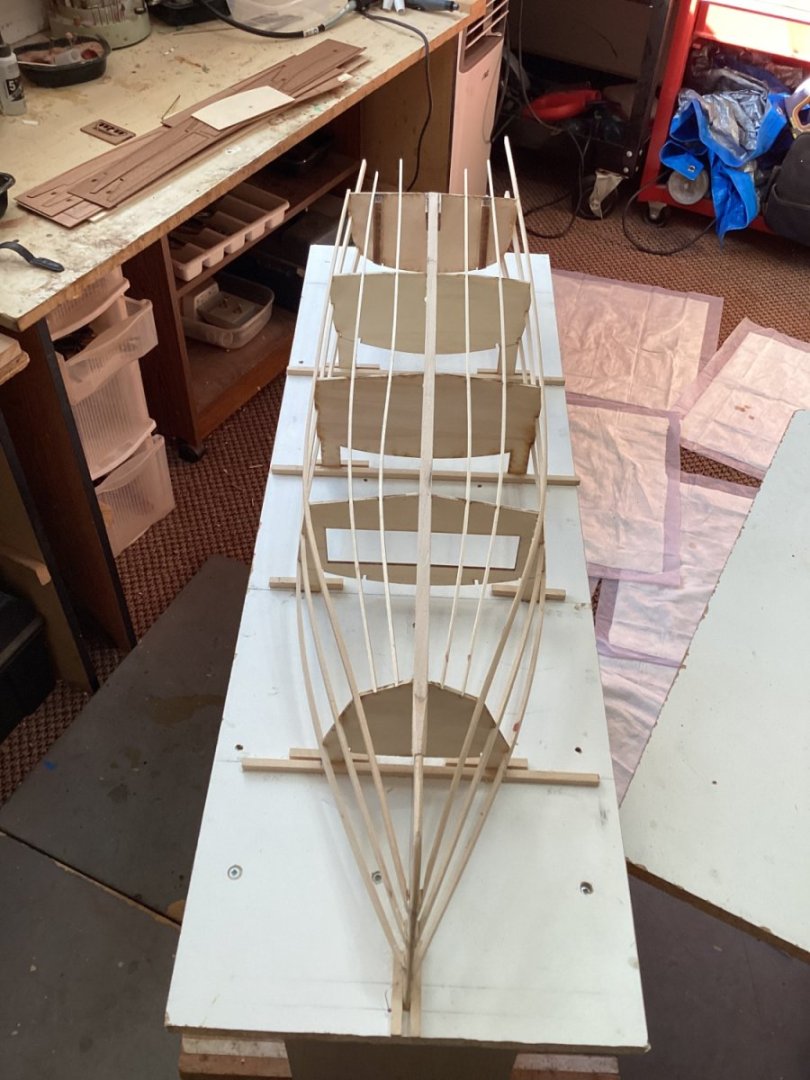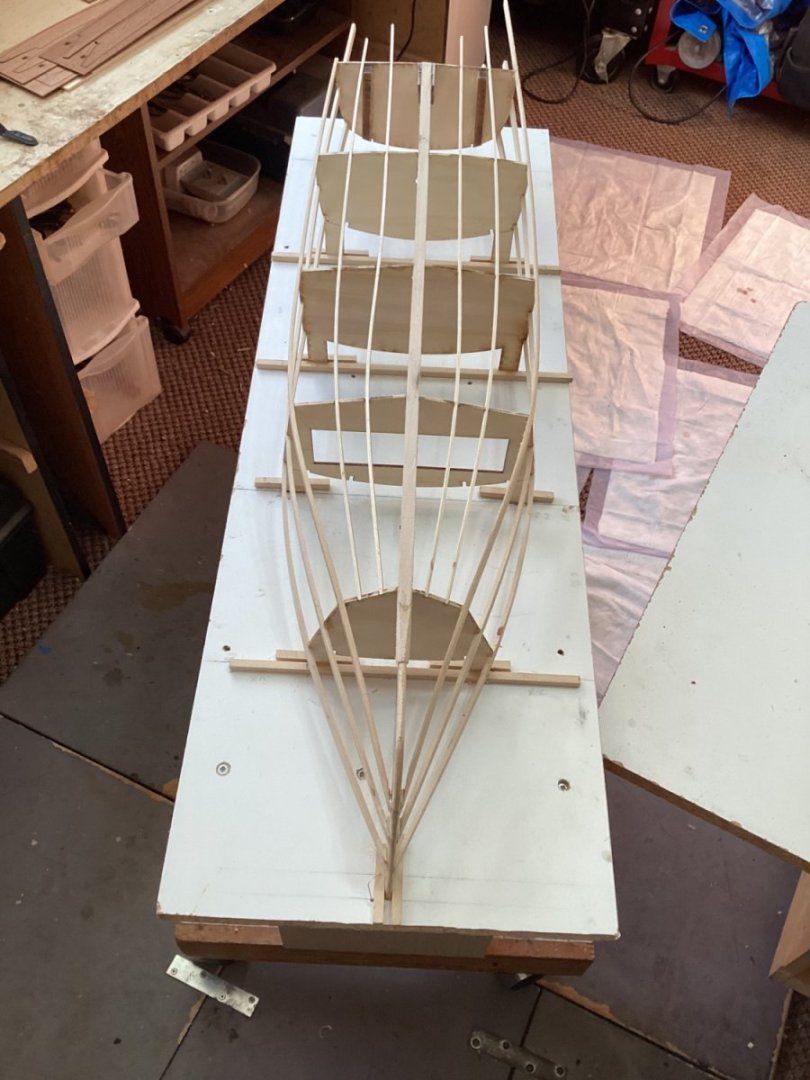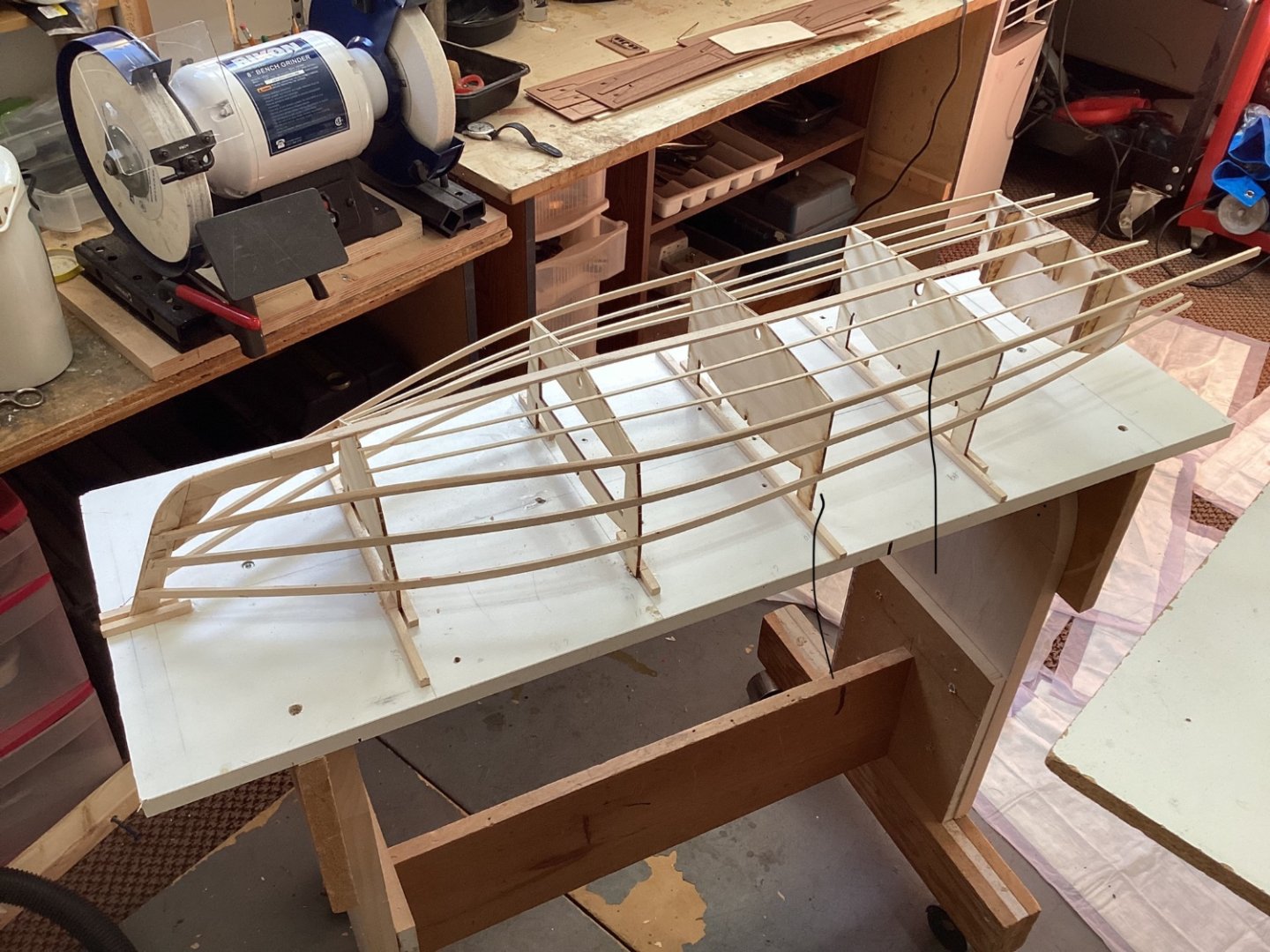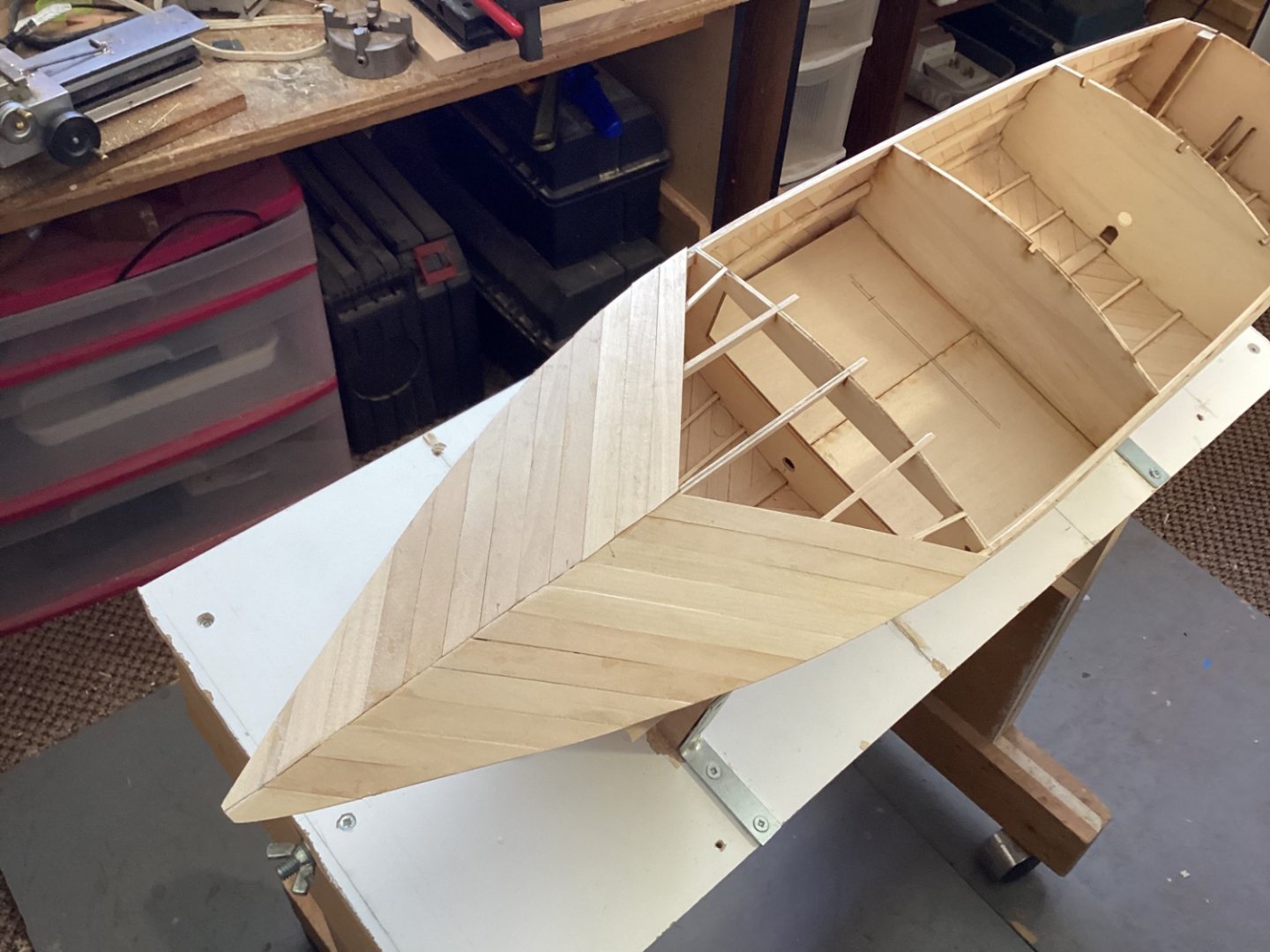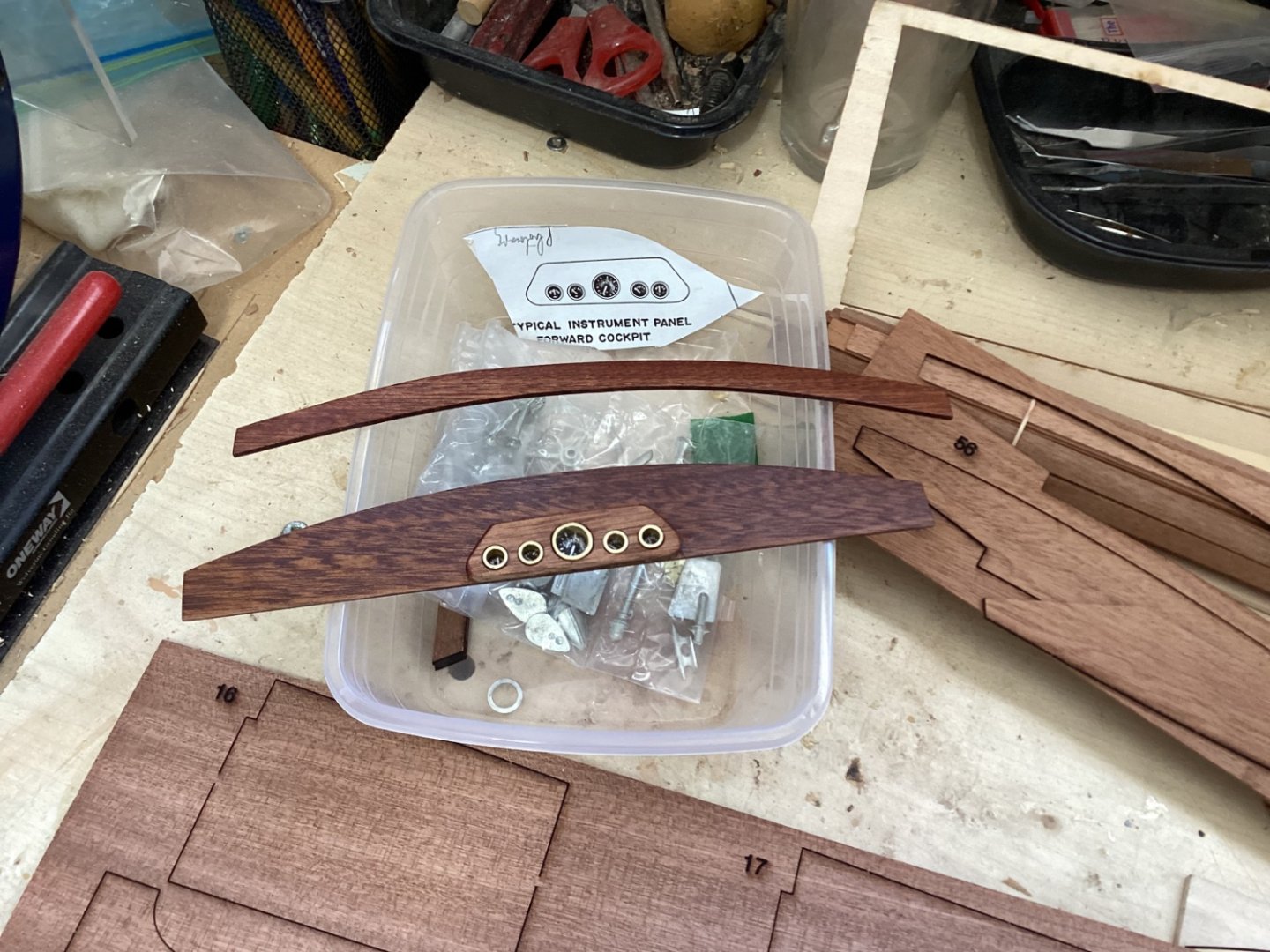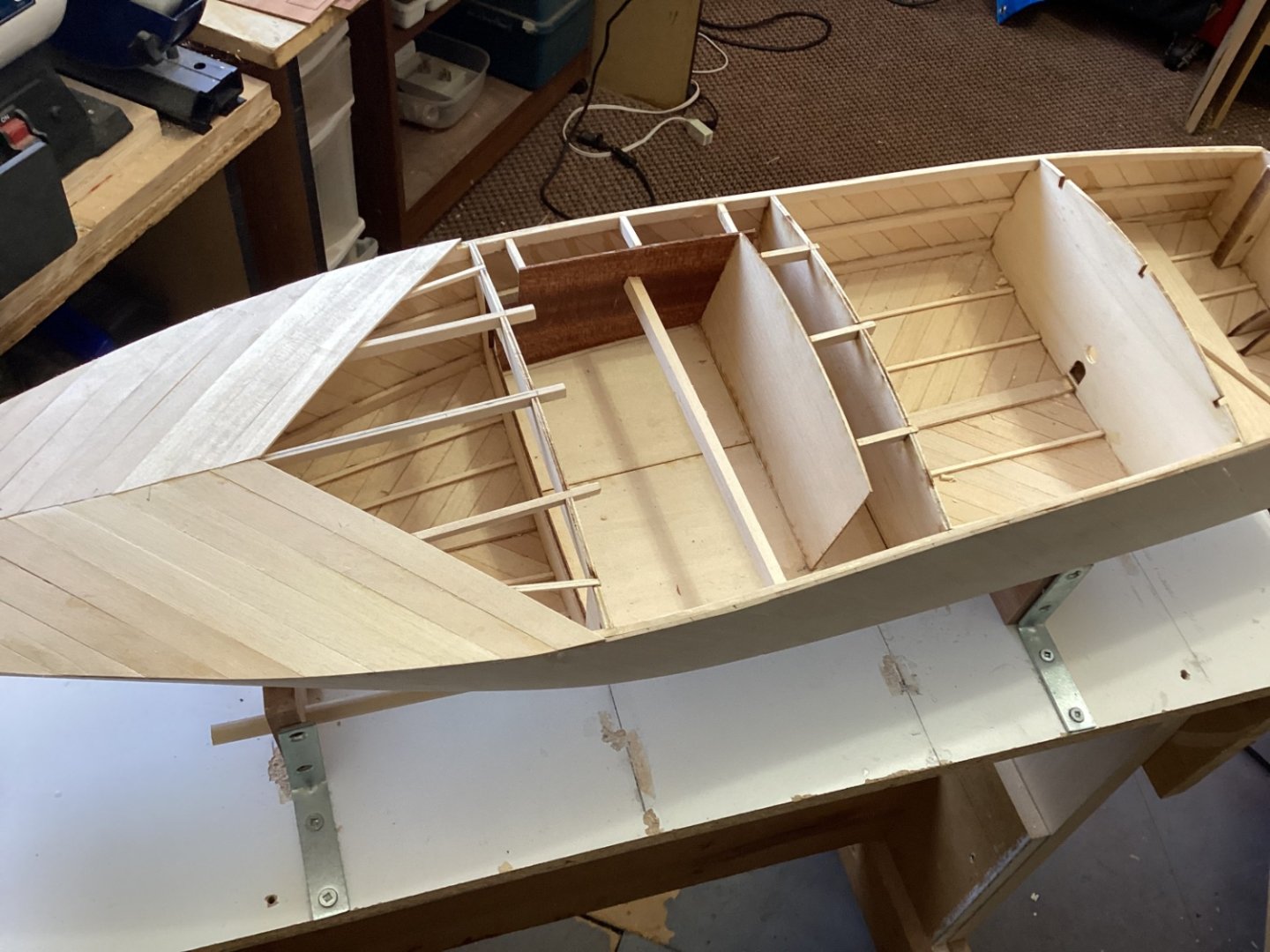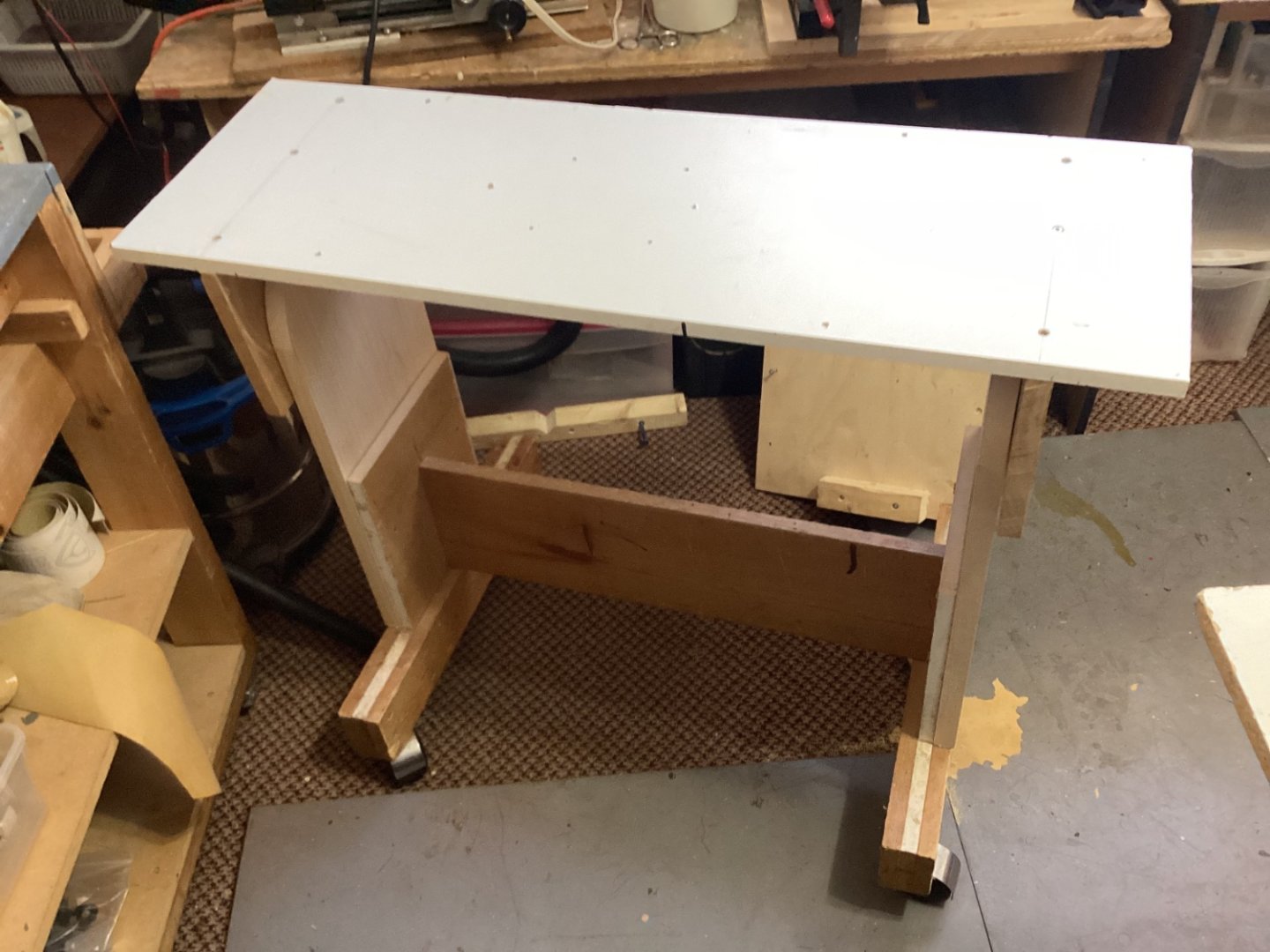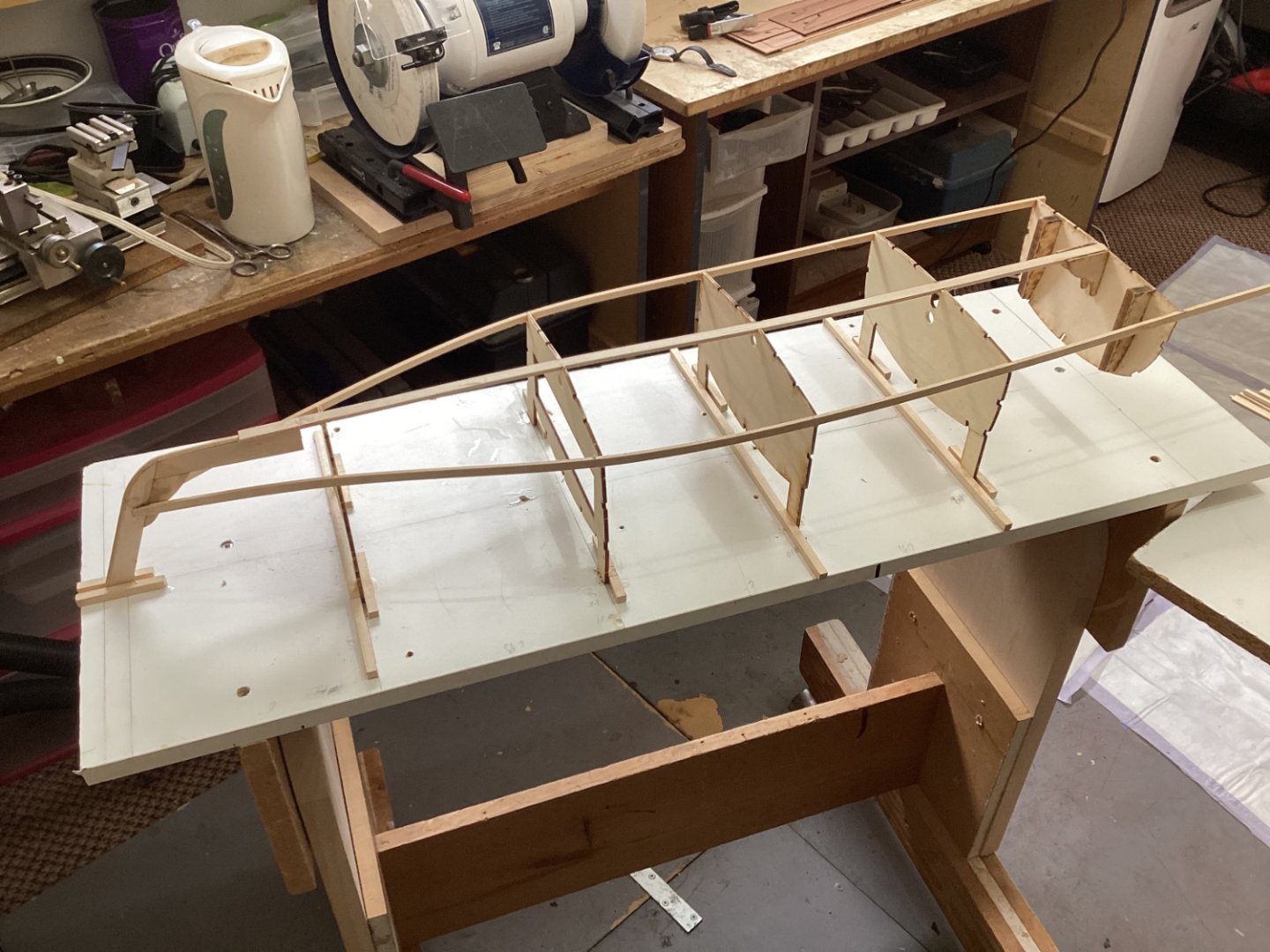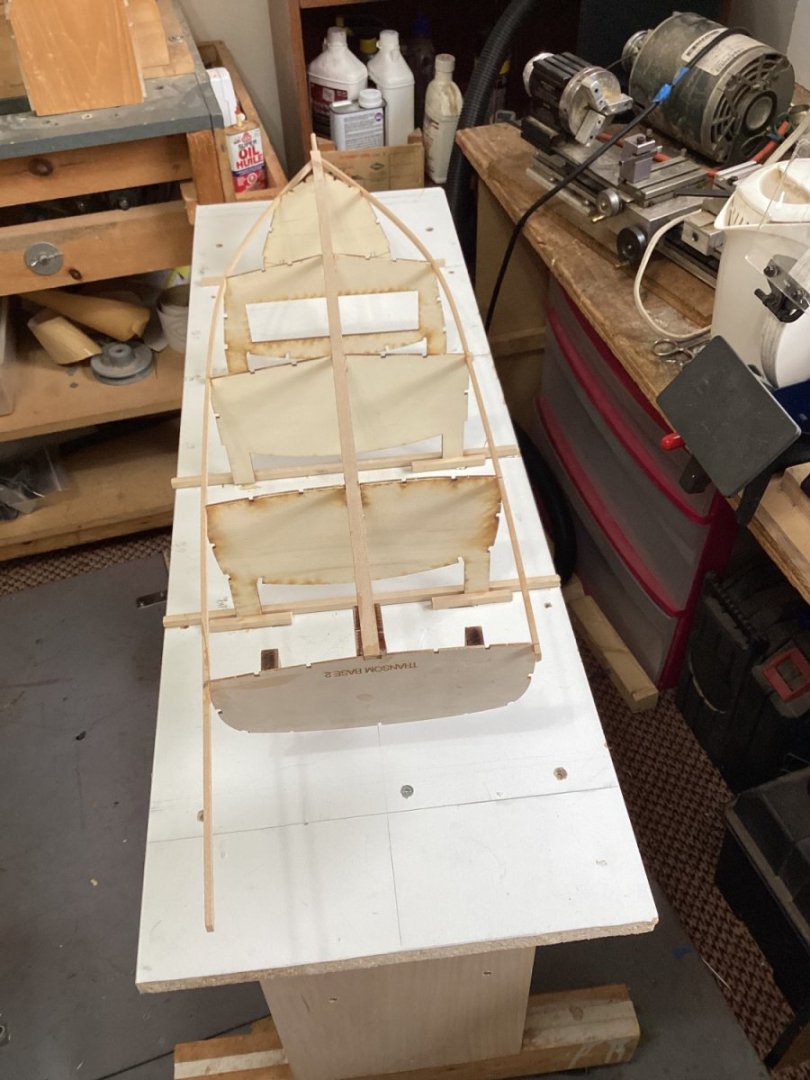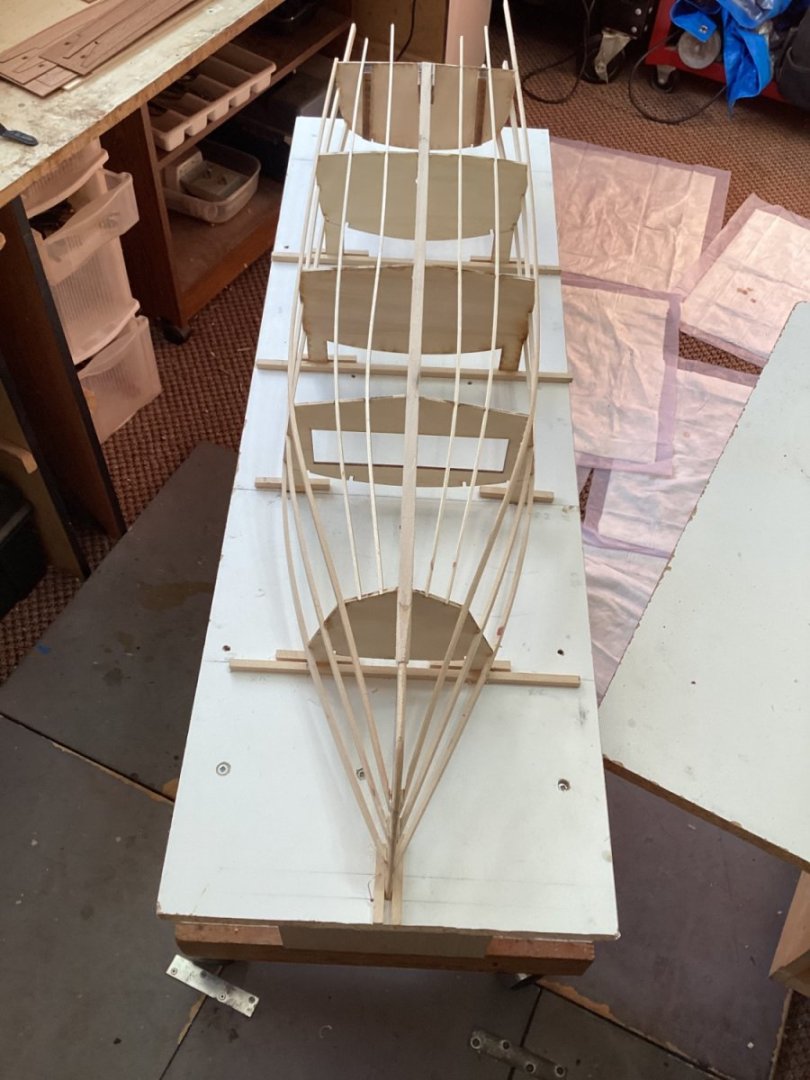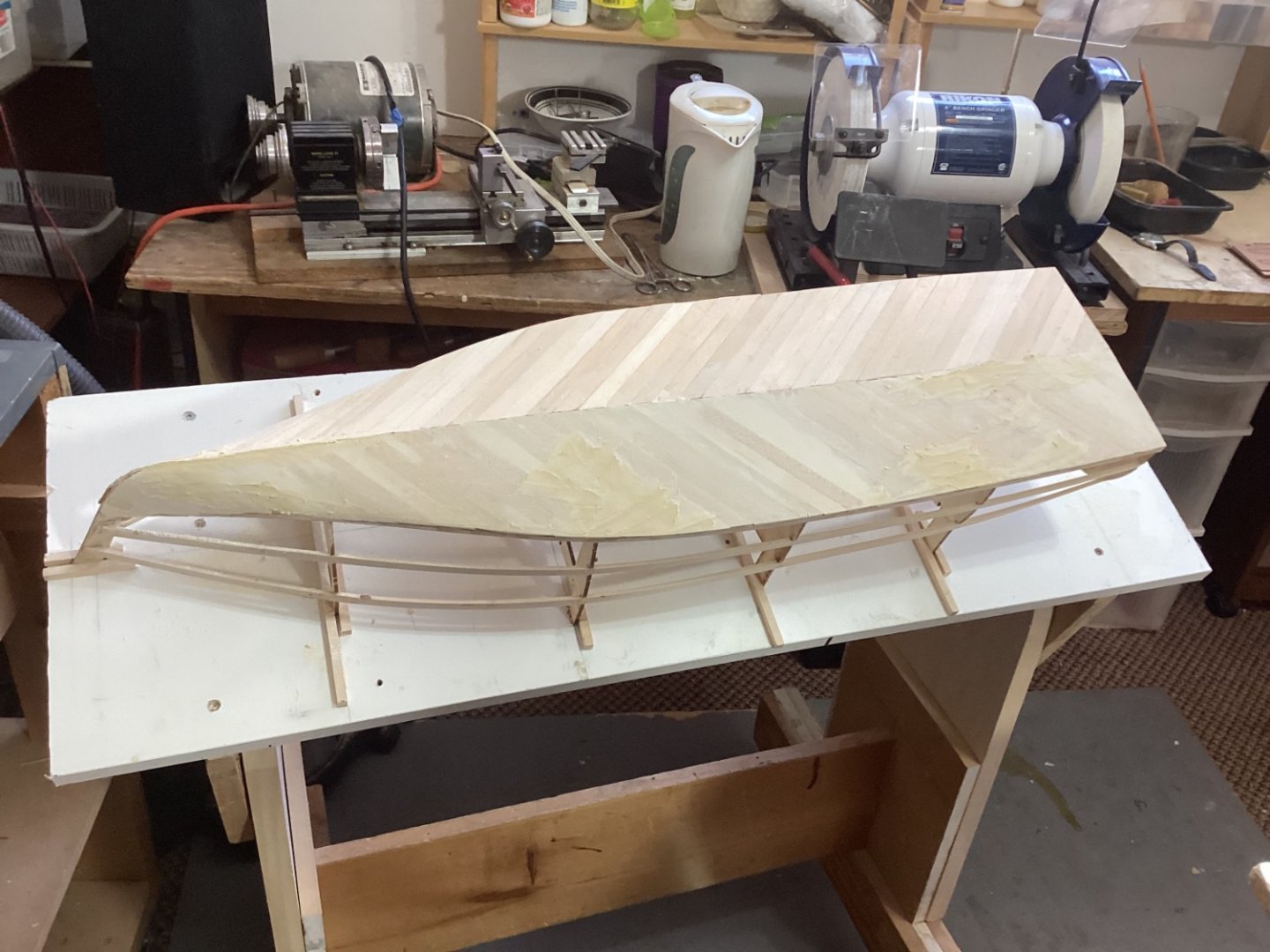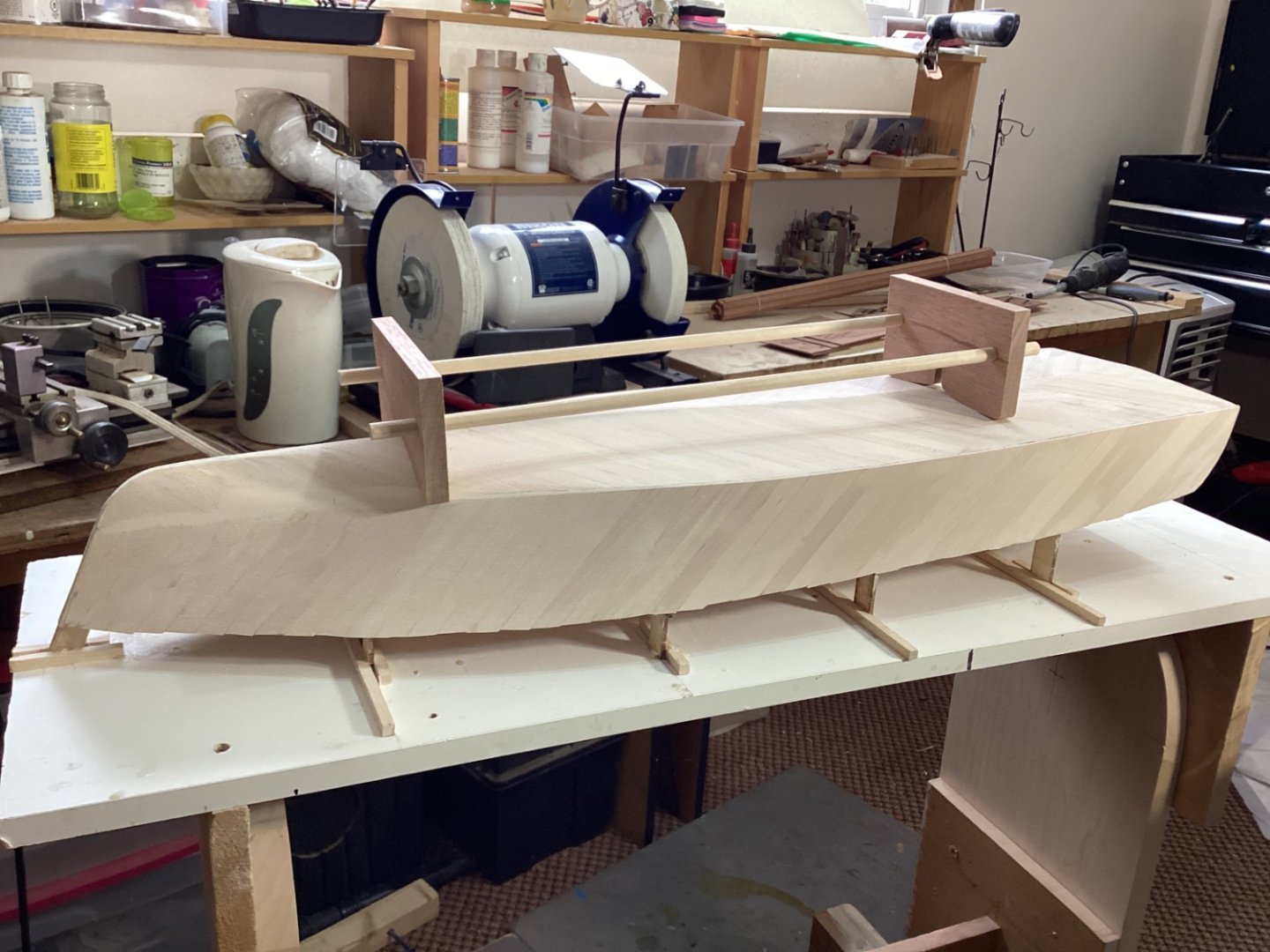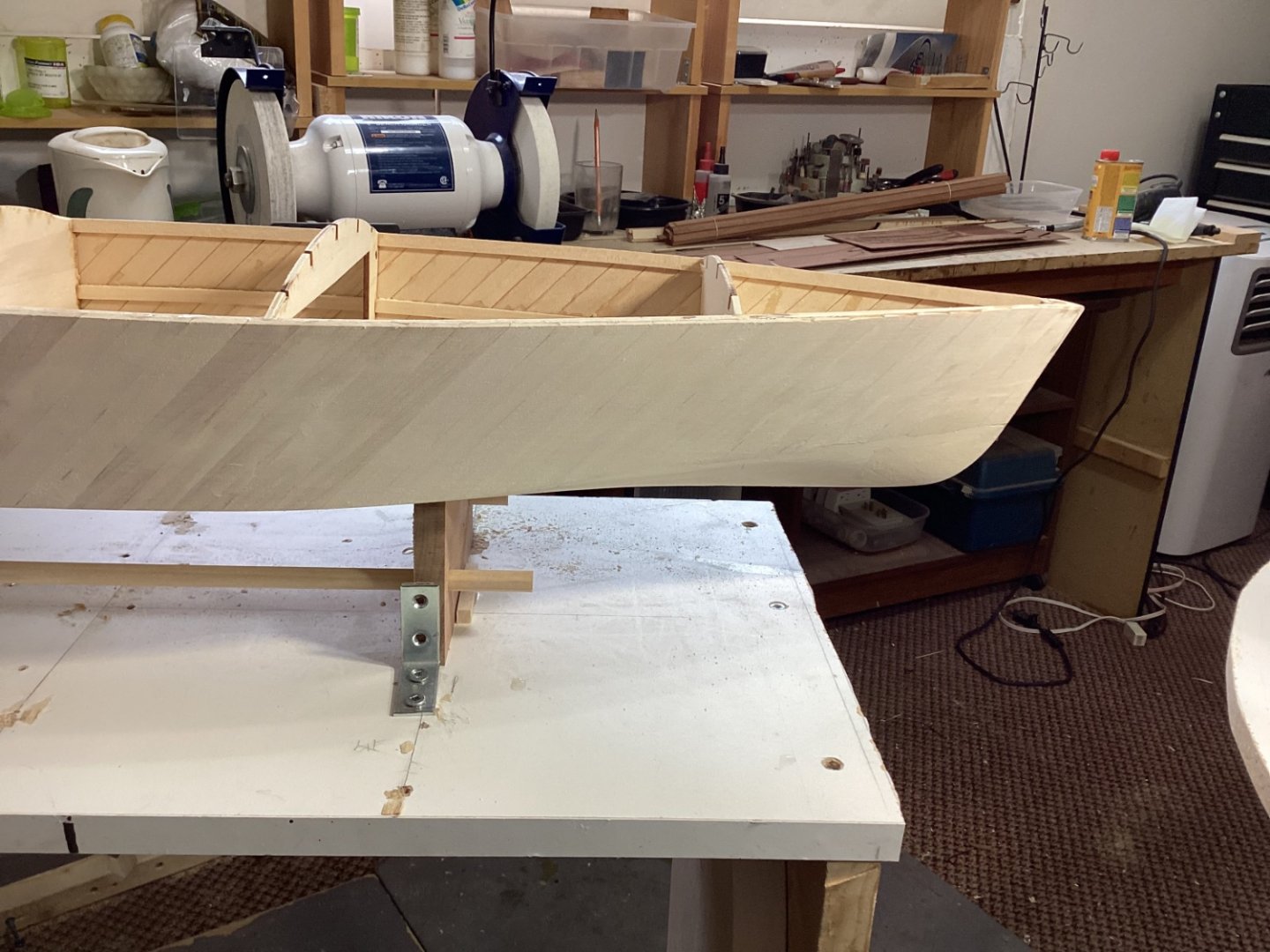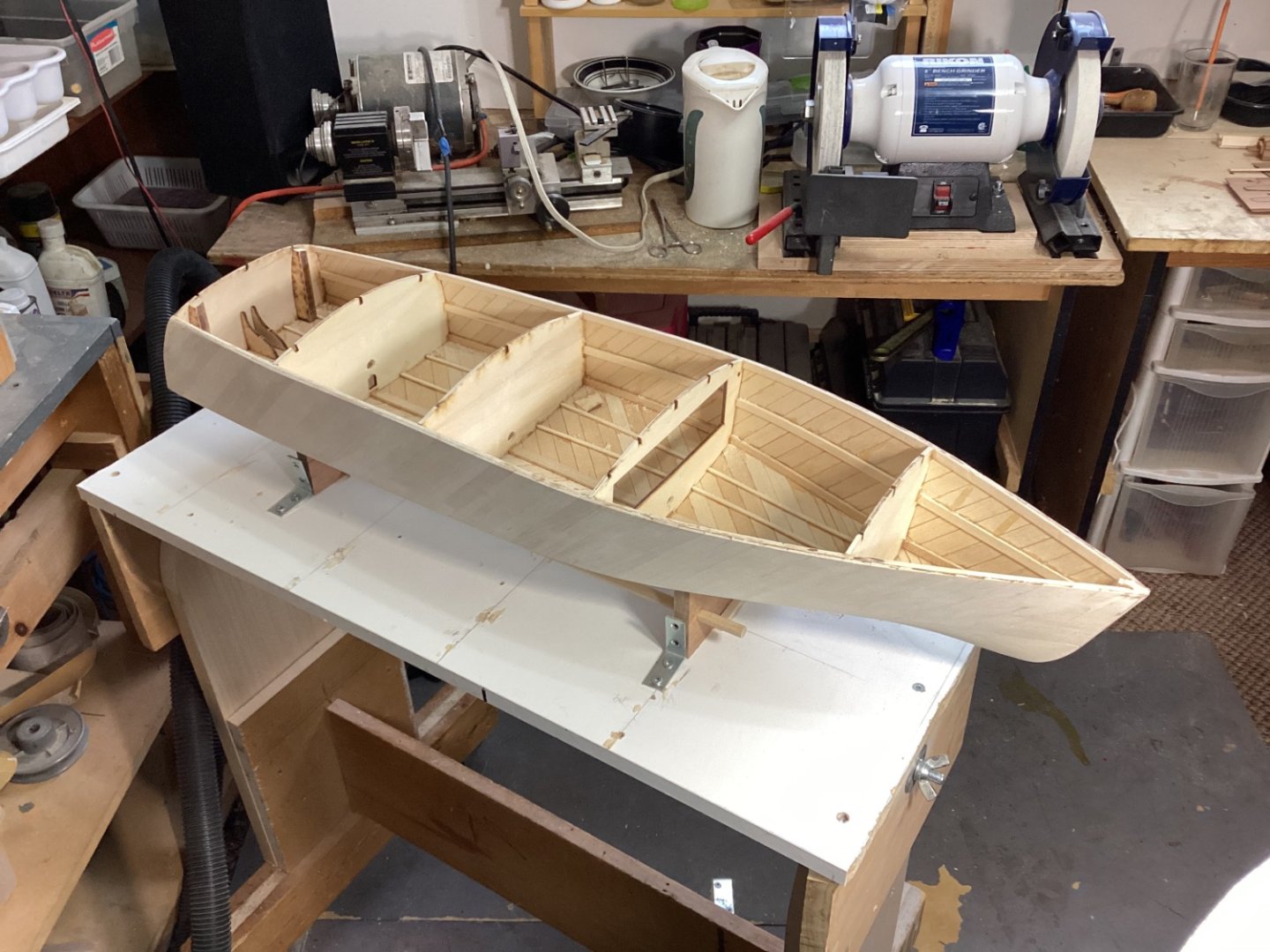
Phil Main
Members-
Posts
7 -
Joined
-
Last visited
About Phil Main
- Birthday 03/24/1941
Profile Information
-
Gender
Male
-
Location
Fonthill, (Niagara Region), Ontario
-
Interests
Over the last thirty years, I have built a number of ships representative of different periods in history. As I built kits with solid hulls, to those with bulwarks, my skills and knowledge increased. My first attempts of scratch building were discouraging, but I was constantly expanding my knowledge and skills and with each attempt, I mastered a new aspect of building model ships from wood and metal. The last ship I completed was Gambier Bay where I refined my skills in airbrushing the camouflage on a W.W. 2 aircraft carrier. Currently, I'm scratch building a 1/30 model of San Juan (1565) which is the most challenging project of anything I have built in the past and requires, at least in the early months, as much research as it does actual building. Currently, as I plank the lower starboard side of the ship, I more aware than ever of all the knowledge I have learned from the people, organizations and on-line resources that have contributed to this current build.
Recent Profile Visitors
-
 Roger Pellett reacted to a post in a topic:
Mahogany Runabout by Phil Main - BlueJacket Shipcrafters
Roger Pellett reacted to a post in a topic:
Mahogany Runabout by Phil Main - BlueJacket Shipcrafters
-
 king derelict reacted to a post in a topic:
Mahogany Runabout by Phil Main - BlueJacket Shipcrafters
king derelict reacted to a post in a topic:
Mahogany Runabout by Phil Main - BlueJacket Shipcrafters
-
 king derelict reacted to a post in a topic:
Mahogany Runabout by Phil Main - BlueJacket Shipcrafters
king derelict reacted to a post in a topic:
Mahogany Runabout by Phil Main - BlueJacket Shipcrafters
-
 Prowler901 reacted to a post in a topic:
Mahogany Runabout by Phil Main - BlueJacket Shipcrafters
Prowler901 reacted to a post in a topic:
Mahogany Runabout by Phil Main - BlueJacket Shipcrafters
-
 yvesvidal reacted to a post in a topic:
Mahogany Runabout by Phil Main - BlueJacket Shipcrafters
yvesvidal reacted to a post in a topic:
Mahogany Runabout by Phil Main - BlueJacket Shipcrafters
-
 AON reacted to a post in a topic:
Mahogany Runabout by Phil Main - BlueJacket Shipcrafters
AON reacted to a post in a topic:
Mahogany Runabout by Phil Main - BlueJacket Shipcrafters
-
Once the cockpits had been completed, it appeared that I would have to create framing and rip the 1/2” basswood planks on my Preac, to continue planking at 45 degrees. This seemed like a lot of extra work for something that would not been seen on the finished boat so I have chosen to bend the planks from at 90 degrees to the keel. It’s not difficult to heat the basswood in a kettle to 180*, shape it with a simple attachment to a small soldering iron, then tape it in place to cool and dry. Since the heat softens the cellulose in the wood to make it pliable, and not the water sometimes I heat the wood for a few seconds in the microwave. The downside of using the planking at 90* is the possibility of losing some of the subtle curves as the deck narrows and changes shape as I work aft. I will try to avoid this pitfall.
-
 yvesvidal reacted to a post in a topic:
Mahogany Runabout by Phil Main - BlueJacket Shipcrafters
yvesvidal reacted to a post in a topic:
Mahogany Runabout by Phil Main - BlueJacket Shipcrafters
-
 mtaylor reacted to a post in a topic:
Mahogany Runabout by Phil Main - BlueJacket Shipcrafters
mtaylor reacted to a post in a topic:
Mahogany Runabout by Phil Main - BlueJacket Shipcrafters
-
 mtaylor reacted to a post in a topic:
Mahogany Runabout by Phil Main - BlueJacket Shipcrafters
mtaylor reacted to a post in a topic:
Mahogany Runabout by Phil Main - BlueJacket Shipcrafters
-
 mtaylor reacted to a post in a topic:
Mahogany Runabout by Phil Main - BlueJacket Shipcrafters
mtaylor reacted to a post in a topic:
Mahogany Runabout by Phil Main - BlueJacket Shipcrafters
-
I began planking the foredeck again with planks at a 45 degree angle to the keel, then realized I had jumped the gun and work needed to be completed in the two cockpits and engine compartment, before the planking on the top deck is completed. The most recent pics show progress on the fore cockpit with the floor and seatback glued in place and installation of the sidewalls underway. Note that the mahogany parts in the cockpits will be finished prior to installation. Over the years, I have used tung oil on my models as it brings out the grain of the wood and the gloss can be controlled by the number of coats I apply. i.e. The more coats, the shinier the finish.
-
The scale is 1” to the foot, so the 30’ model will be 30” long. Once I understood that the legs of the bulkheads which rested on the building board needed to be CA’d to the building board, everything went as planned. The biggest challenge was locating the longitudinal pieces on the stem. I solved this by photocopying the plan and using this as the template directly on the stem. Next week I’ll begin the first planking layer in which the bottom strakes are glued at a 45 degree angle to the keel.
-
Bluejacket kit of Mahogany Runabout: I have been building something from wood since I was 10 years old starting with soapbox cars including one with pedals and chain from a discarded bicycle. In my younger years, model railroading was my past-time, but what do you do with a growing family which requires a move to a larger house. So for a few years, I built R.C. airplanes where the planes I built were admired, but I was a lousy model pilot. For the last 30 years I’ve been building model ships, some of which have been accepted for display in a local museum. Recently, I completed a scratch build of the San Juan, a Spanish galleon sunk in 1565 near Red Bay, Labrador, located and studied by Parks Canada marine archaeologists. So now I’m a senior with the master bedroom of my apartment converted to a model building shop. The are a number of ships and boats which I have thought about building for decades, the first of which is a mahogany runabout.
About us
Modelshipworld - Advancing Ship Modeling through Research
SSL Secured
Your security is important for us so this Website is SSL-Secured
NRG Mailing Address
Nautical Research Guild
237 South Lincoln Street
Westmont IL, 60559-1917
Model Ship World ® and the MSW logo are Registered Trademarks, and belong to the Nautical Research Guild (United States Patent and Trademark Office: No. 6,929,264 & No. 6,929,274, registered Dec. 20, 2022)
Helpful Links
About the NRG
If you enjoy building ship models that are historically accurate as well as beautiful, then The Nautical Research Guild (NRG) is just right for you.
The Guild is a non-profit educational organization whose mission is to “Advance Ship Modeling Through Research”. We provide support to our members in their efforts to raise the quality of their model ships.
The Nautical Research Guild has published our world-renowned quarterly magazine, The Nautical Research Journal, since 1955. The pages of the Journal are full of articles by accomplished ship modelers who show you how they create those exquisite details on their models, and by maritime historians who show you the correct details to build. The Journal is available in both print and digital editions. Go to the NRG web site (www.thenrg.org) to download a complimentary digital copy of the Journal. The NRG also publishes plan sets, books and compilations of back issues of the Journal and the former Ships in Scale and Model Ship Builder magazines.




